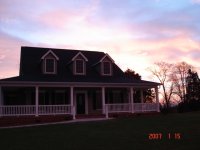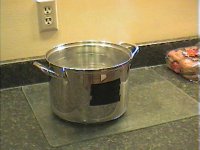thatguy
Elite Member
I am always looking for ways to save on heating/cooling cost.. I stumbled an article talking about 'radiant barrier' recently and wanted to get some of your thoughts..
We have a 1.5 story house - the top floor is about 1200 sq ft that could be finished and there is attic space above that (it is all open right now).. Currently the entire attic is unfinished (except for a plywood floor which is insulated as an exterior wall. The attic gets scorching hot in the summer and I have installed an exhaust ventilation fan in the house eave, but I cant really tell much of a difference. We also have a vent across the roof line.
I see that Reflectix offers an radiant barrier (4' x 125' rolls @ ~$70/roll) that can be installed across the roof joists leaving an air space the depth of the roof joist. From reading different articles this would help keep the heat from coming into the attic space and thus keep the house cooler.
Do you think this would help keep my house cooler? any first hand experience?
The reflectix website says that the barrier can cause the shingles to get 5 to 10 degrees hotter since the heat is trapped between the roof and the radiant barrier. How bad is this extra heat on shingle life? Our shingles are black.
Comments - thoughts - opinions?
I have included a pic of the house so you can see how much roof we have - its huge..
thanks
brian
We have a 1.5 story house - the top floor is about 1200 sq ft that could be finished and there is attic space above that (it is all open right now).. Currently the entire attic is unfinished (except for a plywood floor which is insulated as an exterior wall. The attic gets scorching hot in the summer and I have installed an exhaust ventilation fan in the house eave, but I cant really tell much of a difference. We also have a vent across the roof line.
I see that Reflectix offers an radiant barrier (4' x 125' rolls @ ~$70/roll) that can be installed across the roof joists leaving an air space the depth of the roof joist. From reading different articles this would help keep the heat from coming into the attic space and thus keep the house cooler.
Do you think this would help keep my house cooler? any first hand experience?
The reflectix website says that the barrier can cause the shingles to get 5 to 10 degrees hotter since the heat is trapped between the roof and the radiant barrier. How bad is this extra heat on shingle life? Our shingles are black.
Comments - thoughts - opinions?
I have included a pic of the house so you can see how much roof we have - its huge..
thanks
brian



